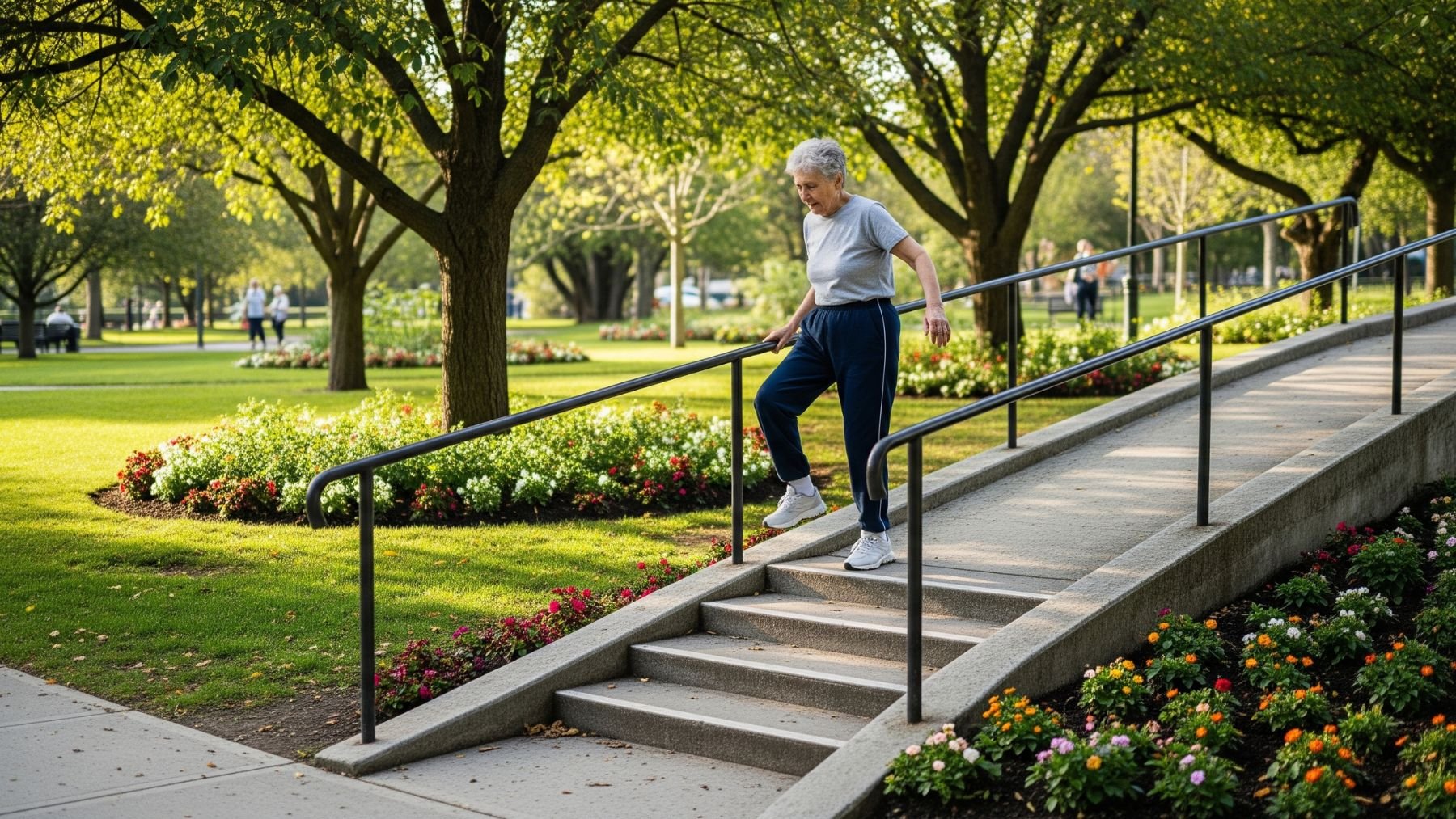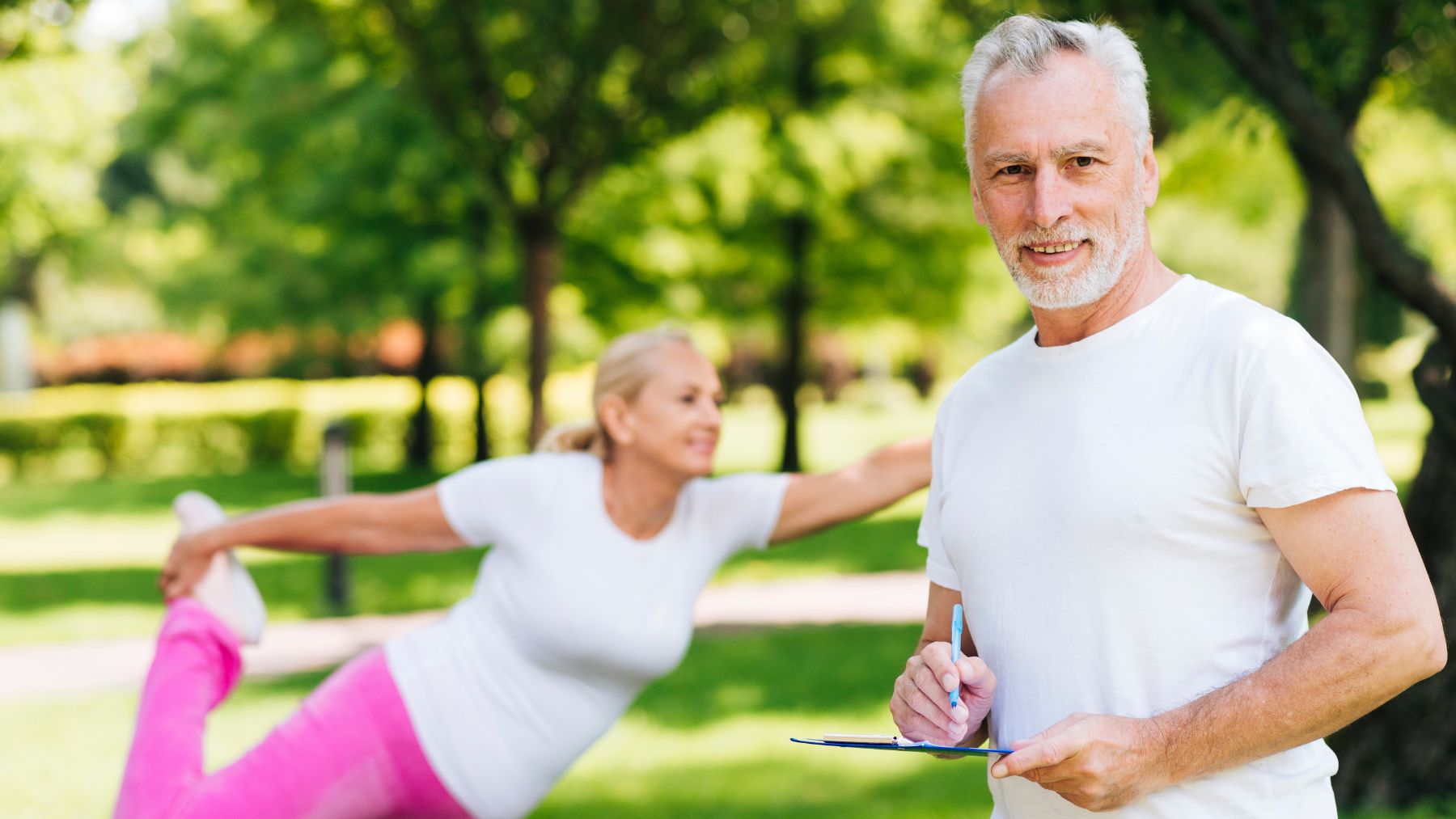In recent years, specially designed senior parks—also called healthy circuit parks—have become more common to promote physical activity among older adults. These open-air spaces feature designed equipment that allow people over 65 to perform targeted exercises tailored to their unique needs and capabilities.
Using these fitness stations helps improve joint mobility, cardiovascular and respiratory health, coordination, strength, and even sensory and cognitive abilities. Proper preparation and considering age are crucial to avoid injuries during exercise.
What is the best park exercise for people over 65 to strengthen their legs?
The top recommended activity is exercises involving ramps and stairs. These movements target the lower body muscles and support bone density, balance, and flexibility, all essential for maintaining independence. Indeed, health experts say climbing stairs may help you live a longer, healthier life.
Working with ramps and stairs involves controlled, low-impact steps up and down, which greatly enhance balance and functional ability in everyday life. This exercise is especially helpful after practicing on parallel bars with obstacles, which build stability and mobility in the legs.

How to perform ramp and stair exercises safely and effectively
When doing ramp and stair exercises, it’s important to keep a steady pace without overexertion. Maintain proper posture: shoulders and back straight, knees slightly bent, and always stay hydrated. The exercises should be pain-free and executed correctly.
For stair routines, begin by carefully stepping up and down while holding onto a handrail for support. Calf raises on the first step can strengthen lower leg muscles, and balancing on one leg helps improve stability. For more advanced seniors, mini squats followed by gentle jumps on a step add a challenge.
Make sure the environment is safe, with good lighting, secure railings, and non-slip surfaces. Consulting a doctor or physical therapist before starting is vital, especially for those with balance or muscle weakness.
Basic stair and ramp exercises
Stepping up and down stairs: Provide support by standing beside the person and holding their arm. Encourage them to look forward, lift knees high, and lean slightly forward from the hips to assist climbing. Pause often to guide the next steps.
Calf raises: Stand facing the stairs with feet on the first step, holding the railing. Let toes hang off the edge, raise heels by pressing the balls of the feet together, then lower slowly.
More advanced movements
Mini squats with step jumps: Stand on the lowest step with feet shoulder-width apart. Bend knees and lower hips while engaging the core, then jump lightly forward, landing softly with knees aligned over toes.
Balance training: Hold onto a railing or wall, lift one leg off the floor, or walk heel-to-toe to improve coordination.
Safety tips
- Have supervision nearby.
- Ensure lighting is good, railings are firm, and steps are slip-resistant.
- Get a professional health assessment before starting exercises, especially with any weakness or balance concerns.
Incorporating ramp and stair exercises into regular park visits offers a practical, low-impact way for people over 65 to build leg strength and maintain independence. These movements improve not only physical health, but also confidence in everyday activities like walking and climbing stairs at home. With proper guidance and safety measures, seniors can enjoy a more active lifestyle and reduce the risk of falls or injuries.

